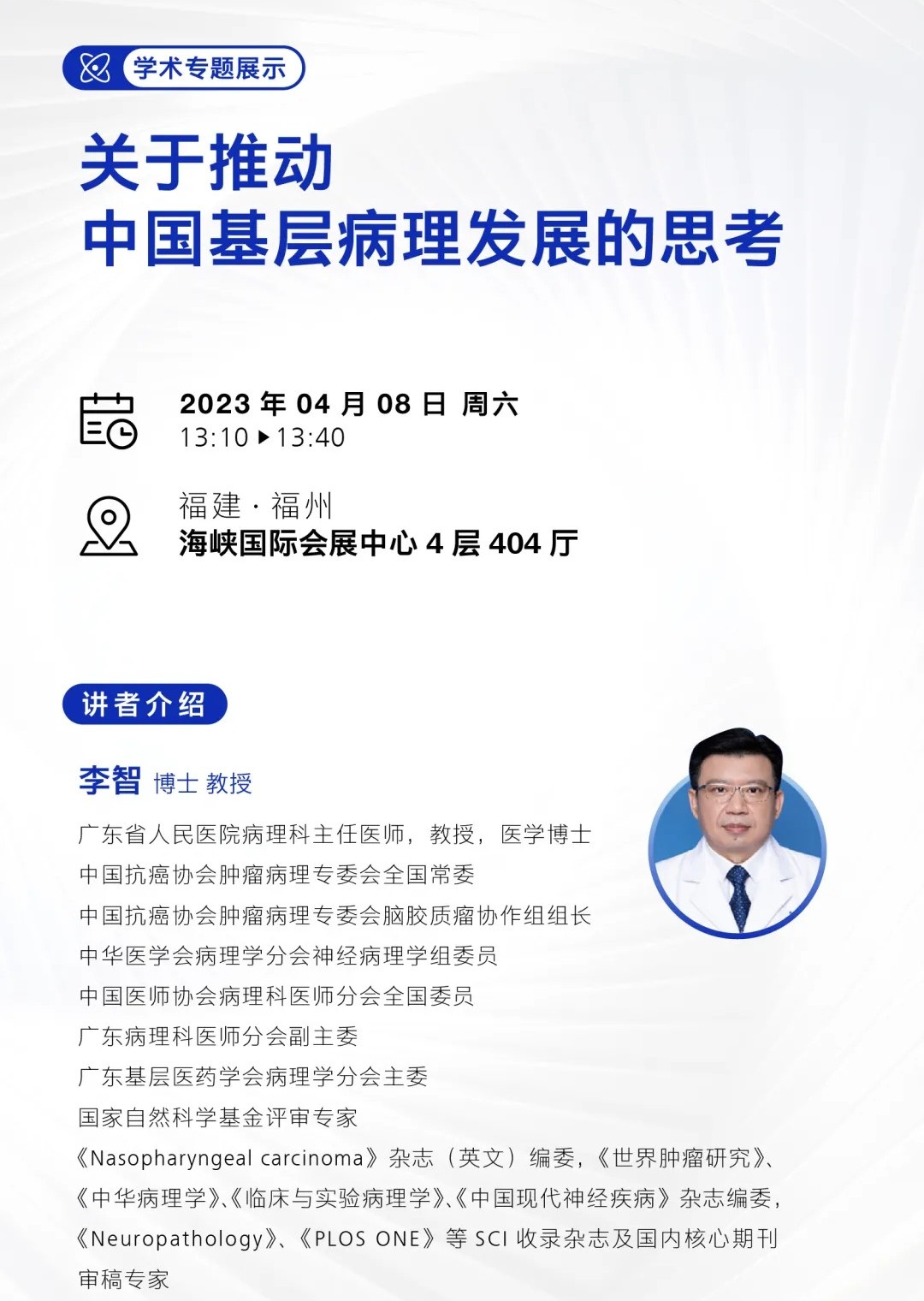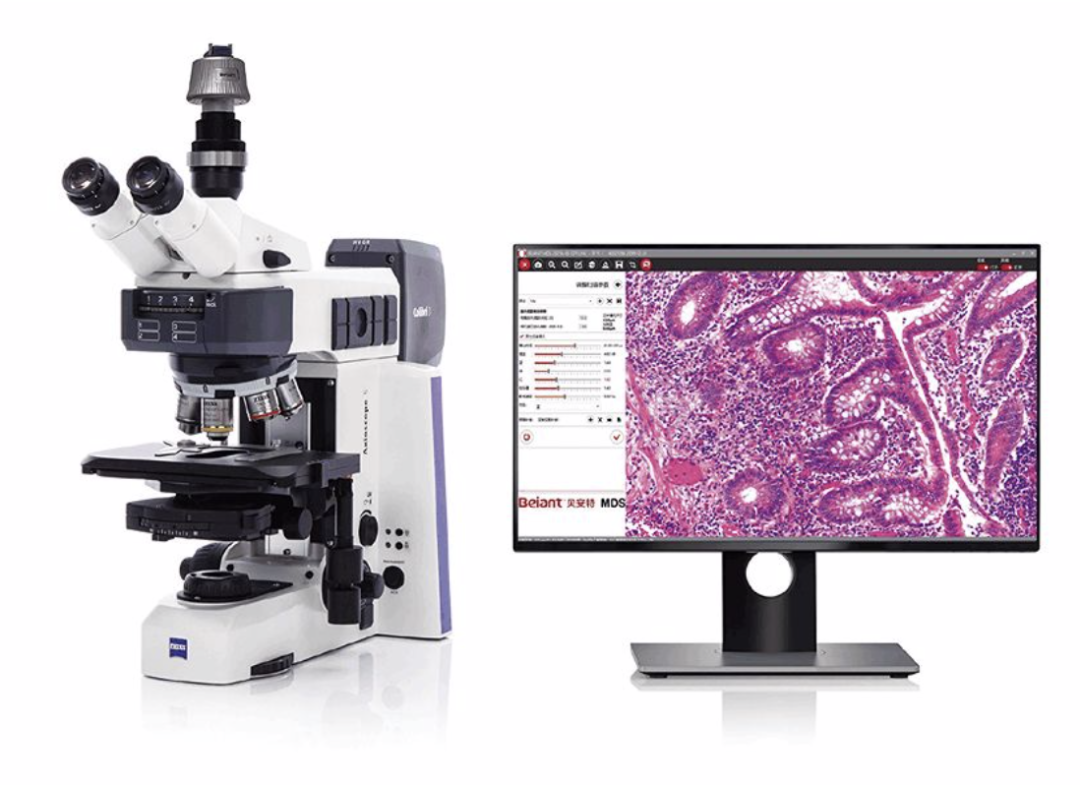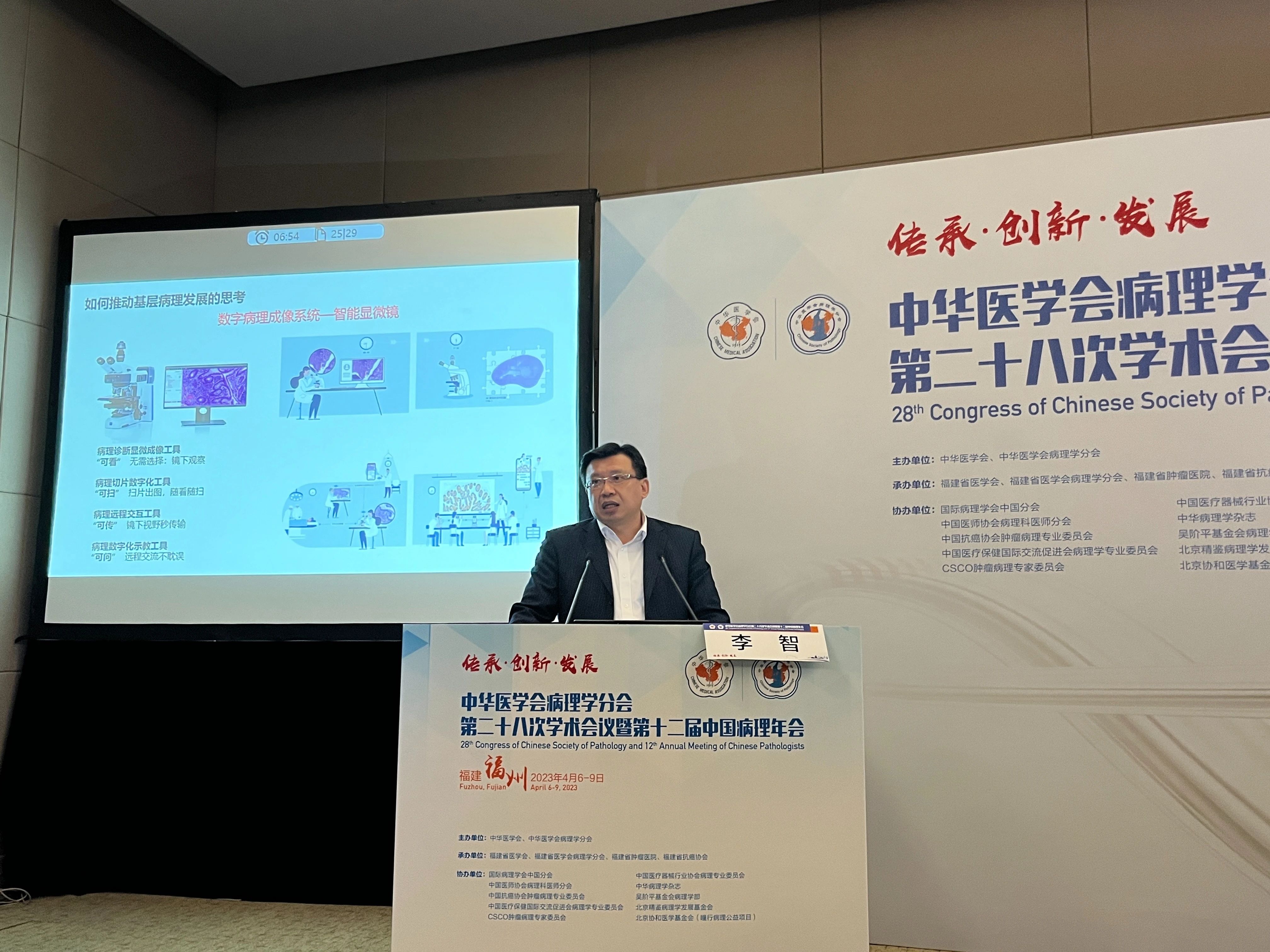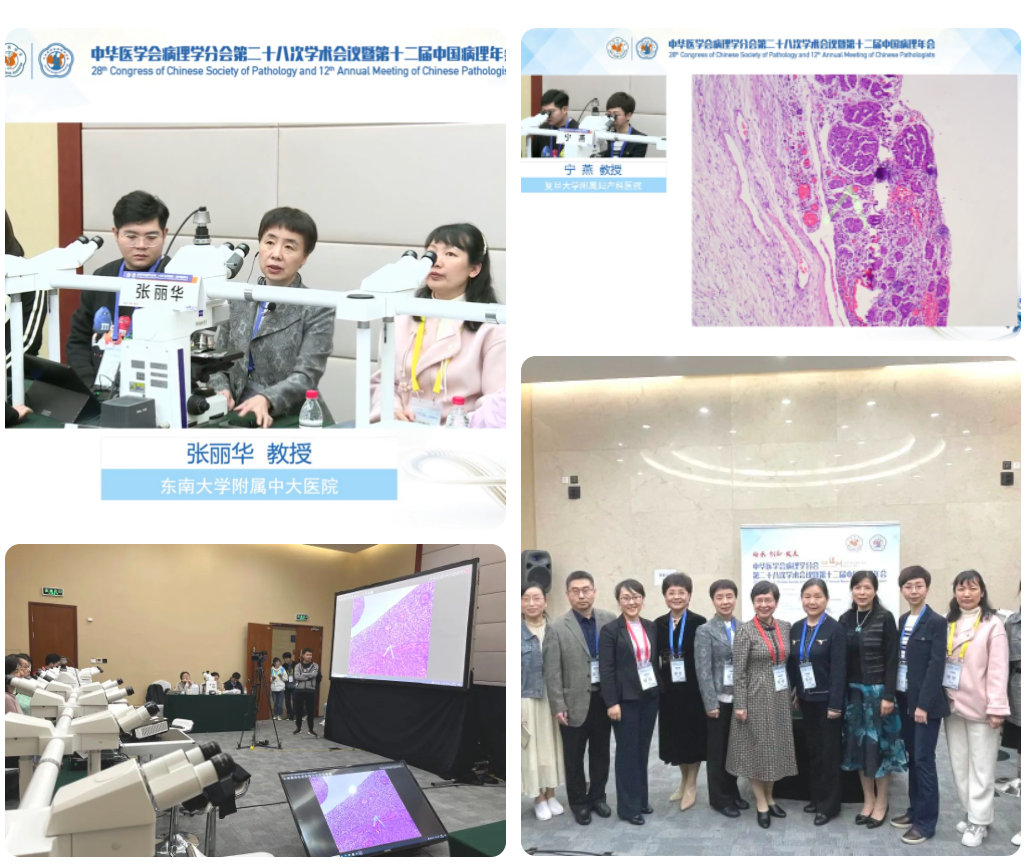On April 6-9, the 28th academic conference of the Pathology Society of the Chinese Medical Association and the 12th Annual Conference of Chinese Pathology was held in Fuzhou. Zeiss invited Li Zhi, Chairman of the Pathology Society of Guangdong Provincial Society of Primary Medicine and chief physician of the Department of Pathology of Guangdong Provincial People's Hospital, to deliver an academic keynote speech "Thoughts on Promoting the Development of Primary Pathology in China". This paper mainly discusses the development trend of primary pathology in China and how to solve the difficulties and challenges faced by primary pathology at present. "Zeiss +MDS" Rui See digital pathology imaging system, characterized by immediacy and interaction, better promote the healthy development of China's primary pathology cause.
The difficulties and challenges facing Chinese pathology department

As the chairman of the Special Committee of Pathology of Guangdong Provincial Society of Primary Medicine, Professor Li Zhi maintains regular academic exchanges and interactions with many primary hospitals in the province, and promotes the improvement of the pathological diagnosis level of primary pathologists. He pointed out the current difficulties faced by grassroots pathology departments in China: there is a shortage of 70,000 professionals in central and western China; Difficulty in generating income, low salary and low status; The impact of large workload, potential medical risks and other factors. At the same time, the era of precision medicine and personalized medicine has increasingly higher requirements for clinical pathology practice.
What should we do to promote primary pathology?
In order to promote the development of grassroots pathology departments, Professor Li Zhi believes that the measures that can be taken include: improving the construction of hardware and software in the department, improving the requirements of quality control in the pathology department, optimizing the pathology process, establishing and improving the functions of the society, strengthening academic and technical exchanges, online consultation, and establishing a support mechanism to overcome the weak. However, in reality, these measures are also facing a severe test. For example, the quality of digital section scans used in traditional online consultation is uneven, the transmission speed is too slow, and the diagnostic habits of experts are different, which still cannot meet the needs of pathology professionals.
"Instant + interactive" cloud pathology platform
So, what does primary pathology really need? Professor Li Zhi proposed the cloud pathology platform. Based on the microscope, pathologists can use the platform to interact and communicate, and can also conduct real-time teaching, which can help the grassroots pathology department improve the diagnosis level in the long run. Professor Li Zhi introduced the "Zeiss +MDS" digital pathological imaging system as "a real-time and interactive pathological communication platform". With the help of this platform, the actual effect of microscope imaging can be seen, scanned, transmitted and asked can be achieved, which provides great convenience for grassroots pathologists and technicians to solve the difficulties encountered in the work. If we can use these advanced equipment, pathological diagnosis quality control, teaching and research can be improved.
The Zeiss +MDS digital pathology imaging system supports multiple teaching
The "Zeiss +MDS" Rui Jian digital pathological imaging system has been successfully applied to the 12th Annual Chinese Pathology Conference and some provincial and municipal reading conferences, solving the number of people in the application of multi-head microscopy, breaking the geographical and spatial limitations. We believe that through continuous efforts and innovation, continuous optimization of pathology equipment will promote the development and growth of basic pathology talents, and make greater contributions to the people's health.
As a strategic partner of Zeiss, Beant will continue to provide advanced digital pathology solutions to pathology departments, becoming an "integrated pathology solutions specialist".


